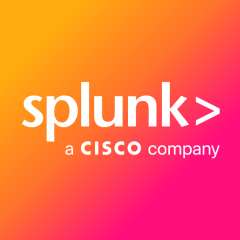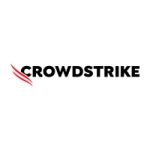What is our primary use case?
We use Splunk Enterprise Security for our security monitoring and incident management. This is our global application that we are using for security monitoring and compliance.
How has it helped my organization?
We've seen some good improvements from a business perspective, particularly regarding security monitoring. However, when I consider our current challenges and future roadmap, I don't believe Splunk Enterprise Security has the capabilities we need. We previously faced challenges with QRadar, which prompted us to migrate to Splunk Enterprise Security. While Splunk Enterprise Security has addressed the past issues we encountered, it fails to meet our future requirements. Currently, it effectively addresses existing threats, but it doesn’t tackle advanced threats, which is a significant challenge we foresee with Splunk. There is still a lot of room for improvement.
What is most valuable?
With the Classic flavor we have in our company, the feature that I find good in Splunk Enterprise Security is from the MITRE coverage point of view, and then the level of information that it provides. The integration with its own SOAR platform is also one of the pros.
What needs improvement?
From the product point of view and deployment point of view, Splunk Enterprise Security is satisfactory. It is not simple; it is at a medium level when it comes to deployment and management of the tool altogether. This includes not only the enterprise platform but also other components such as deployment servers or the Splunk agents we use for collecting logs. When comparing it with different vendors in the industry, from the deployment and maintenance point of view, it is not up to the level of other vendors.
When discussing the drawbacks, it's important to note that the flavor I’m currently using is called "Classic." Unfortunately, this platform does not offer any of the new features that Splunk introduces. As a result, we are the last ones to find out about new capabilities, and we’re also slow to implement them. Splunk tends to release new features with different flavors of their platform, and being on the Classic flavor means we are least likely to receive the latest updates. This is a significant concern I have regarding Splunk.
When comparing Splunk Enterprise Security with next-gen SIEMs, we look for AI and ML models being incorporated in such a way that it automatically should be able to detect behavioral-based detections. It should be able to detect behaviors from logs and show us the entire attack surface and blast radius of any particular incident, which is primarily missing.
The capability of AI, Artificial Intelligence, is missing, which would help to automatically detect and read data comprehensively. Splunk lacks the new native solutions for agent deployment, which is essential for a large enterprise.
Currently, there is Machine Learning in Splunk Enterprise Security, but that is resource exhaustive and complex, bringing an impact onto our overall stack performance. Technical expertise in Machine Learning is required, and continuous monitoring is needed to ensure Machine Learning learns about our data to provide results, which is resource exhaustive, time-consuming, and costly.
Artificial Intelligence is missing in the Splunk Enterprise Security platform, which would help us read the data automatically, learn from it, and provide attack surface area from a 360-degree perspective. The fixed pricing model requires upfront purchase based on assumptions and roadmap, requiring payment for the next two to three years regardless of usage.
For how long have I used the solution?
I have been using Splunk Enterprise Security for around three years.
What do I think about the stability of the solution?
On a stability scale, I would rate it an eight out of ten.
What do I think about the scalability of the solution?
Regarding scalability, I would rate it a seven out of ten. I don't have the pay as you go model.
We have 150 users using this solution.
How are customer service and support?
Whenever we raise any support case in Splunk, even after providing the required information, if a person is working on it and it gets transferred or handed over to a different representative in a different shift, they keep asking the same questions and requesting more details. Even when we ask for a call, even for P1 or P2 incidents, they keep going around asking for details. When we request P1 or P2 support, it would be wise to get into a call, get all the details, and have a troubleshooting call to address the issue on a priority basis. The technical support representatives keep transferring the tickets during shift handover, and different representatives ask the same questions multiple times, wasting our precious time. The issue doesn't get resolved until I escalate it to their higher management.
How would you rate customer service and support?
Which solution did I use previously and why did I switch?
We were using QRadar previously. We had legacy systems, and from the volume and log source point of view, from the costing perspective and detection point of view, we thought Splunk Enterprise Security was far better than QRadar. Splunk Enterprise Security would provide better capabilities and out-of-box detections. These were some of the things that we saw, and Splunk Enterprise Security was also one of the leaders in SIEM technology. However, once we started using Splunk Enterprise Security, we discovered it was not the right tool.
How was the initial setup?
The initial setup was of medium complexity. It took approximately 8 to 12 months to migrate from QRadar to Splunk Enterprise Security.
The cloud platform we are using is maintained by the Splunk team itself. However, when it comes to our on-premises deployment, the maintenance is very high, cumbersome, and costly from both resource and time perspectives.
What was our ROI?
We haven't saved any money with Splunk Enterprise Security. Instead, we have spent excess of the budget on this with unexpected costs. That's one of the pain points I see with Splunk Enterprise Security. There haven't been any savings.
What's my experience with pricing, setup cost, and licensing?
Splunk Enterprise Security comes with high fixed costs. That's one of the disadvantages. When comparing with different vendors, they offer pay-as-you-use models, which is more user-friendly, but Splunk Enterprise Security comes with fixed pricing.
Which other solutions did I evaluate?
We use different security tools as well.
What other advice do I have?
For any user who wants to have a cost-efficient and next-gen SIEM solution, I wouldn't recommend Splunk Enterprise Security. However, if a user is not concerned about cost and is looking for an on-premises solution, then I would suggest Splunk Enterprise Security. For anyone who wants to go for a cloud and cost-effective solution with next-gen capability, I wouldn't recommend this.
I would rate it a seven out of ten.
Disclosure: PeerSpot contacted the reviewer to collect the review and to validate authenticity. The reviewer was referred by the vendor, but the review is not subject to editing or approval by the vendor.





















